The excess — aesthetic and environmental — of the Vegas Sphere

- Share via
It may be the end of summer, but it’s never too late for soft serve. I’m Carolina A. Miranda, art and design columnist with the Los Angeles Times, with all the sweet treats and essential culture news:
Nothing to Sphere but Sphere itself
I recently traveled to Las Vegas to report on the viral architectural phenomenon that is Sphere, the villainous-sounding new arena just off the Strip that since July 4 has been broadcasting images of eyeballs and moons.
As part of my reporting, I ate a cake called Blue Hawaii at the buffet at Caesars Palace (coconut-y!), posed with a Chippendale’s dancer in a booth on the Linq Promenade and visited the Pedro Pescal bathroom at Cantina Tequila in nearby Henderson. All of it, of course, a necessary part of understanding the immersive excess of the city’s tourist zones. (I look forward to the emails from accounting when I file my expenses.)
My story looks at the ways in which Sphere — no “the” — is part of a long-running Vegas architectural tradition (a building that is all about the signage on its surface) but also breaks from it: Its spherical form and the meta nature of its motion graphics show how Vegas architecture has evolved to meet the age of TikTok.
“This feels like our own,” Joshua Vermillion, an associate professor of architecture at the University of Las Vegas Nevada, told me. “It’s not something we stole from Oakland, it’s not New York or the Roman Colosseum.”

This has definitely ranked among my most entertaining assignments (almost as good as that time I rode a giant egg around Los Angeles). And contributor Sinna Nasseri‘s photographs of the building capture its most surreal attributes. (Seriously, go have a look.)
But this assignment also was framed by calamity. I had to reschedule an early reporting trip due to Hurricane (later Tropical Storm) Hilary, which slammed the Southern California deserts and also hit parts of Nevada. (Vegas was largely spared; the surrounding mountains were not.) Two days after I departed Vegas, flash floods from monsoon rains left swaths of the city underwater — and resulted in a slew of apocalyptic videos of leaky casinos on TikTok.
Make the most of L.A.
Get our guide to events and happenings in the SoCal arts scene. In your inbox every Monday and Friday morning.
You may occasionally receive promotional content from the Los Angeles Times.
All of it was a reminder that Vegas levels of environmental excess, whether in Vegas or anywhere else, come with very real environmental costs.
Late last month, Sphere Entertainment Co., the company that built and manages the soon-to-open venue, announced a pending agreement to fulfill a majority of Sphere’s energy needs with solar power. But that still has to be approved by the Public Utilities Commission of Nevada and wouldn’t go into effect until 2027.
Moreover, there are the effects of ambient light on wildlife. I am reminded of an L.A. Times article from 2001 about how the powerful light beams at the Luxor Hotel & Casino were attracting insects, which in turn drew legions of bats to their own version of a Vegas buffet.
Sphere is adjacent to the Strip, which is already illuminated within an inch of its life, so its effects will be limited — but it will add to the city’s sky glow.
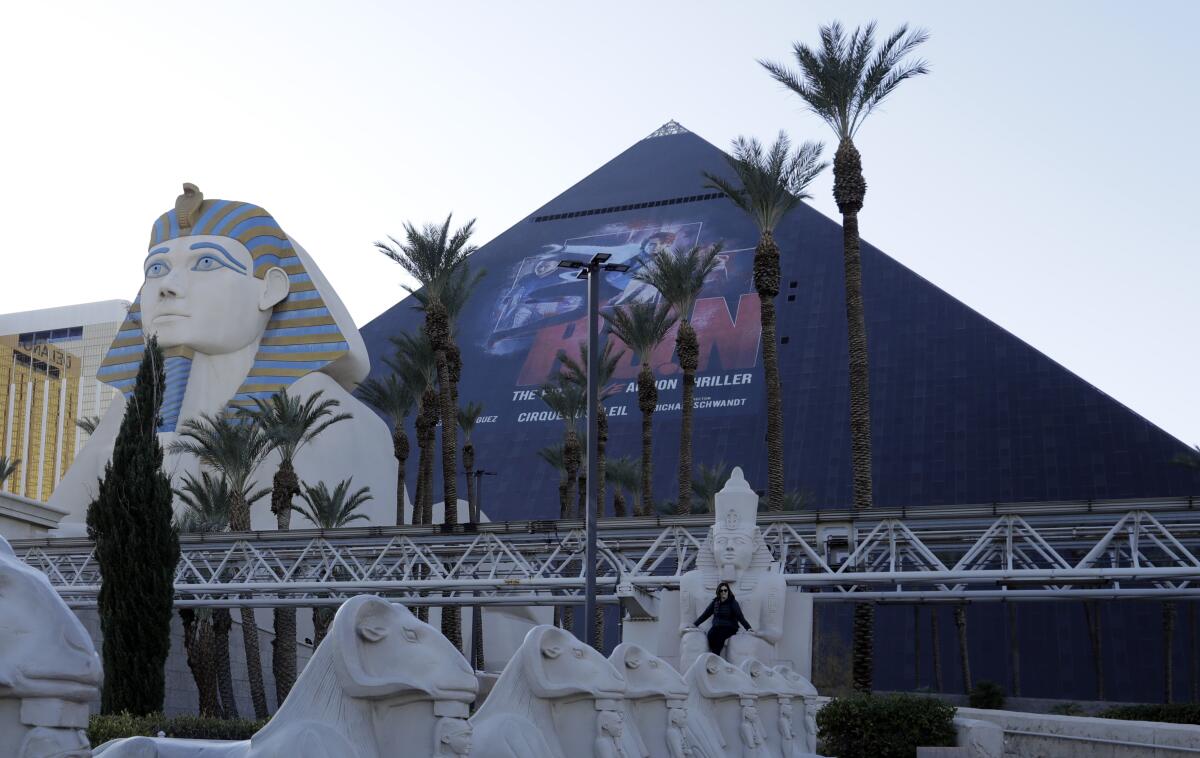
Jenny Ouyang, a biologist at the University of Nevado Reno, tells me there are things the building’s programmers could do to balance wildlife needs with human ones. Her suggestion: Limit blue tones during migratory season. “Shorter wavelength light is more damaging, so you can put a longer wavelength reddish light,” she says. “A lot of our birds orient via stars, so if you light up the sky, they can’t see orientation.”
In fact, Sphere, with its seductive motion graphics screens, could be a platform for educating passersby about such natural phenomena. “It’s a great opportunity to be environmentally friendly,” she says, “and also showcase an incredible display.”
That was a sentiment echoed by UNLV’s Vermillion, who dreams of a night when the lights go out in Vegas and he is able to see the Milky Way. In addition to eyeballs, what if Sphere were broadcasting the stars that go unseen because of all the ambient light in the city?
A simulacrum of the sky in a city known for simulacra? Sounds like the perfect Vegas attraction.
On and off the stage
The big theater news in L.A. is that playwright and “Moonlight” screenwriter Tarell Alvin McCraney has been named artistic director of the Geffen Playhouse. “McCraney’s experience with Hollywood makes him uniquely poised to helm an L.A.-based institution,” write Charles McNulty and Jessica Gelt, “allowing him to tap into the riches of both the theater and the screen.”
The appointment, writes McNulty in a separate piece, represents “a commitment not just to playwrights and playwriting but to the future of American drama.” McCraney sat down with McNulty for a terrific conversation about theater and performance in this complicated, pandemic-ish era. “We’re at an inflection point right now,” says McCraney. “And it felt selfish to sit on the sidelines.”
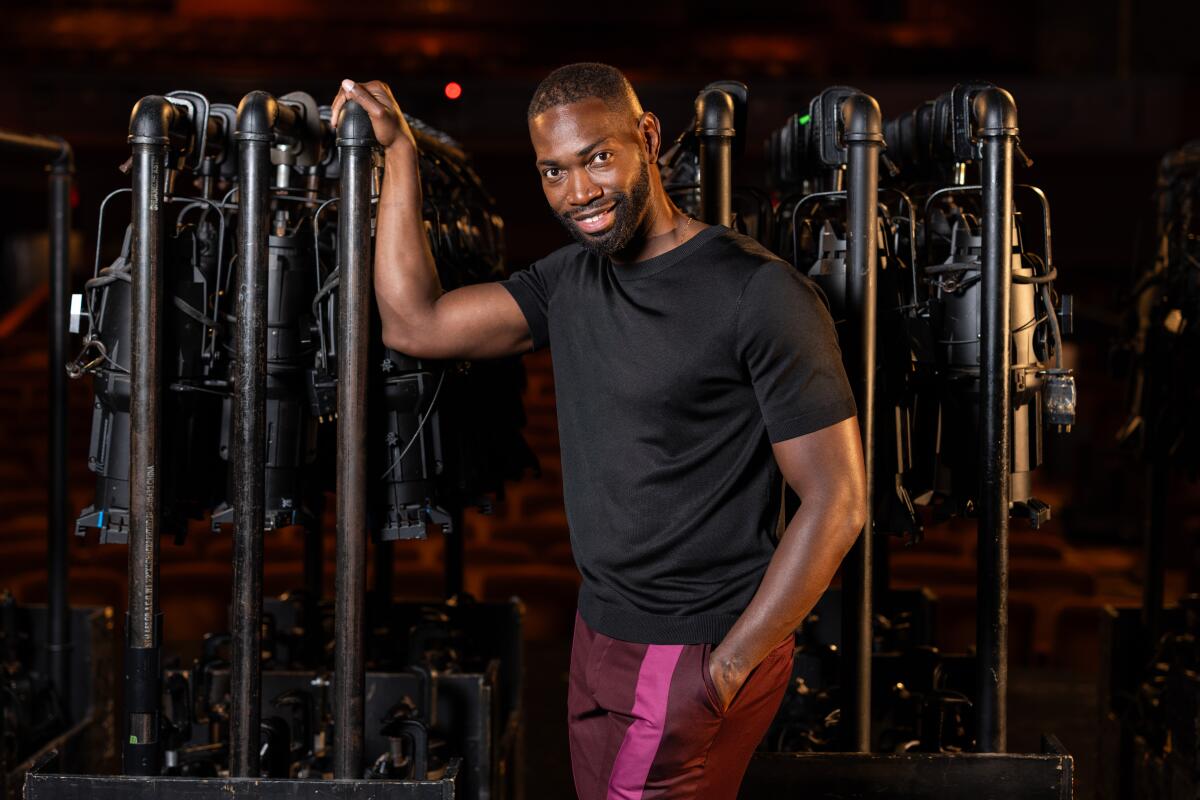
At A Noise Within, director Andi Chapman presents Lydia R. Diamond‘s dramatization of Toni Morrison‘s unsettling first novel, “The Bluest Eye.” McNulty reports that this adaptation stays true to Morrison’s fluid work. “The play, like the book, proceeds in scenes of harsh, unforgettable vividness,” he writes. “One scene is devastating not only in its psychological cruelty but also in its forensic analysis of how the poison of white supremacist thinking trickles down.”
Adam Rapp’s “The Sound Inside” is having its L.A. premiere at the Pasadena Playhouse, directed by Cameron Watson. The play is a two-person show about a teacher who confides a cancer diagnosis to a student who may have secrets of his own. The story is “grippingly told,” writes McNulty. And Amy Brenneman, in the role of Bella, a professor and writer facing her own mortality, is “sensitive without being sentimental.”
A new musical at San Francisco’s American Conservatory Theater is inspired by the life of Don Cornelius, the entertainment impresario who, with $400 of his own money, helped launch the iconic television dance show “Soul Train.” But “Hippest Trip — The Soul Train Musical,” written by Dominique Morisseau, doesn’t overlook some of the show’s exploitative practices. “I don’t want to ever apologize or erase the truth,” Morisseau tells Ashley Lee.
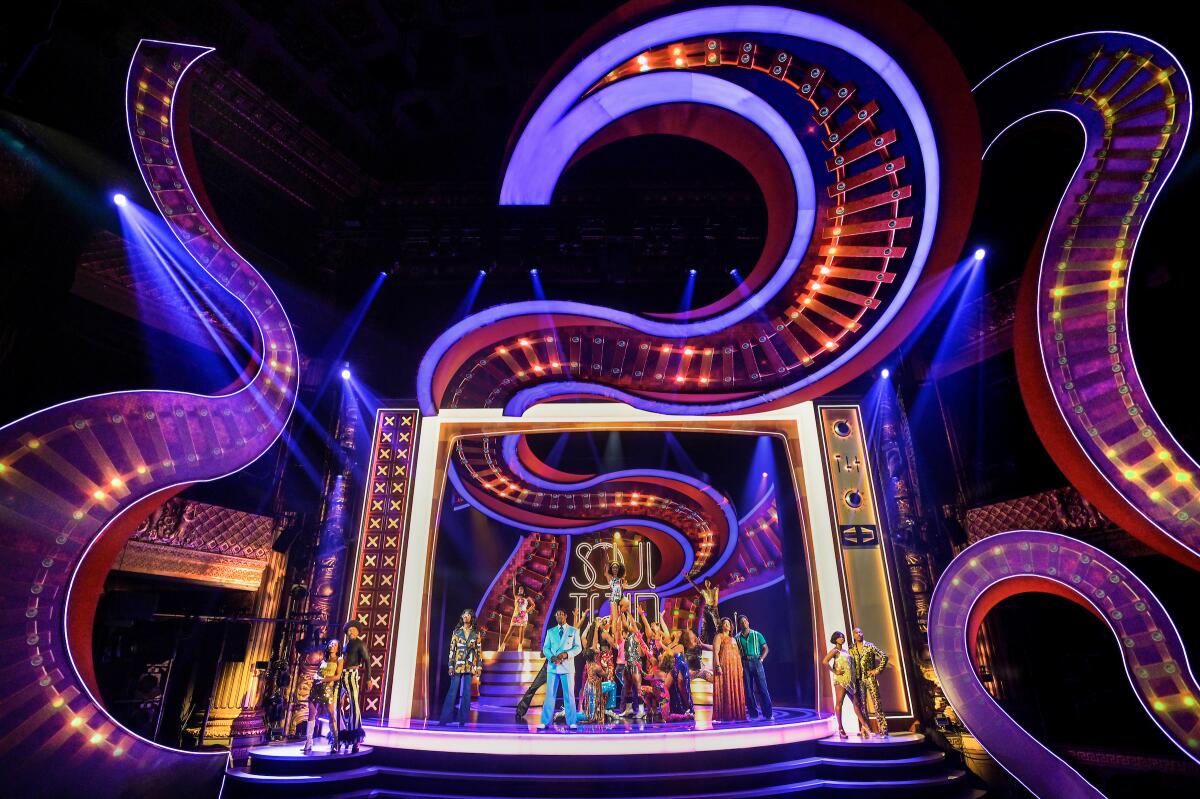
Classical notes
The famous L.A. mountain lion P-22 was celebrated with a concert at the Hollywood Bowl and Times classical music critic Mark Swed was in the audience. For this occasion, the L.A. Phil performed a special commission by Adam Schoenberg called “Cool Cat.” “As a wistfully ebullient orchestral curtain-raiser, and one over in a flash,” writes Swed, “‘Cool Cat’ is well equipped to have a life of its own in various concert settings.”

In and out of the galleries
Artist Derrick Adams opened a show this week at Gagosian that explores moments of Black joy: a family house party, a man taking a bath, a scene of play between father and son. These light interludes speak to the politics of Blackness too. “These are things that have sustained us in our society,” he tells contributor Leigh-Ann Jackson. “If we did not have these things — these barbecues and baby showers and christenings — we would be in a very different place than we are right now, and not a place that we would feel good about.”
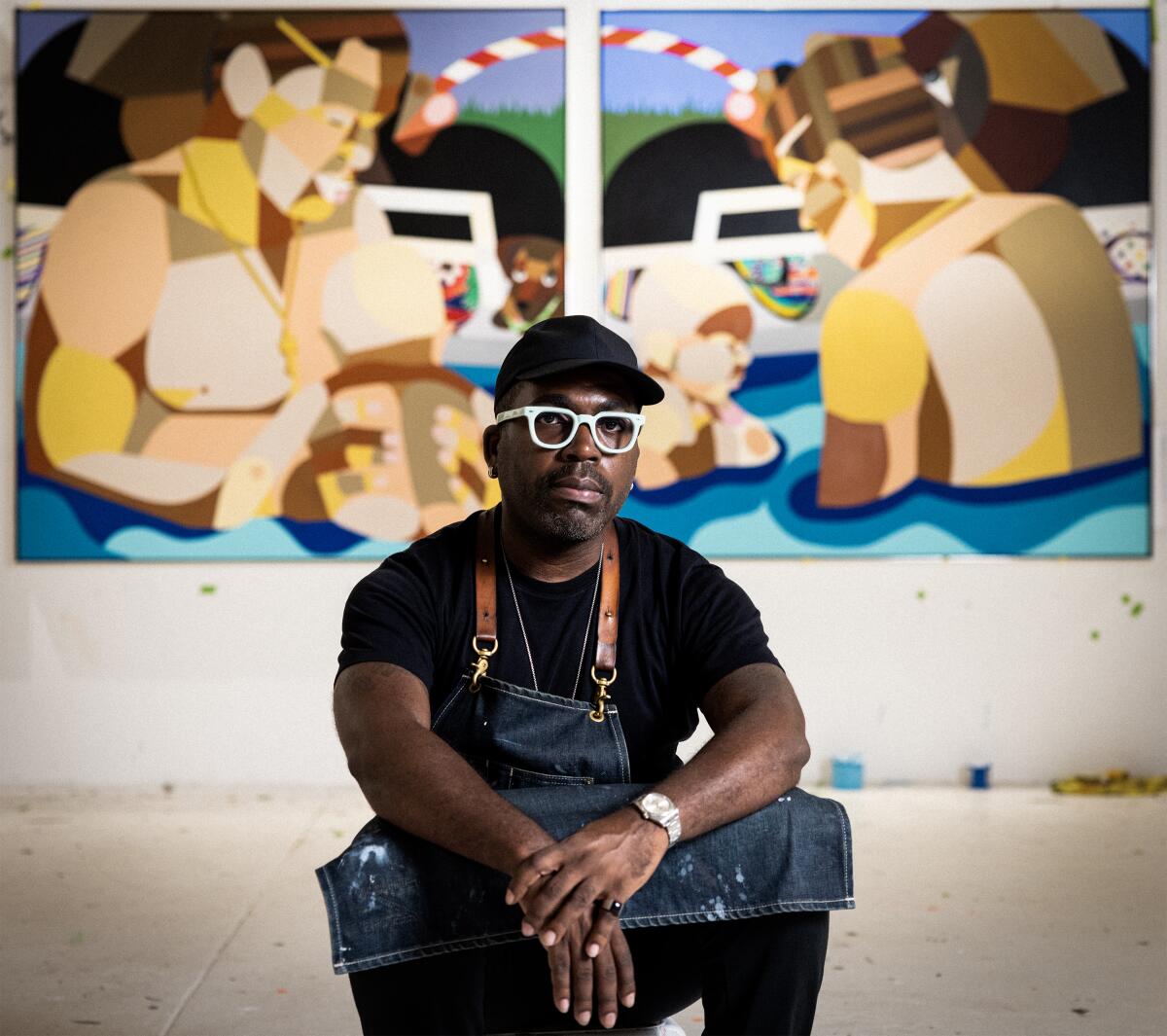
As the Destination Crenshaw project moves to completion, the Los Angeles Cultural Affairs Commission announced that the RTN Crew will update its iconic Crenshaw Wall mural — a work that honors civil rights history but is now faded and peeling. The new mural, titled “The Struggle Continues,” will depict scenes of Africa, the Black diaspora and the Great Migration, among other events. The Times’ Deborah Vankin has all the deets.
Speaking of murals, my colleague Selene Rivera has a report on Alfonso Aceves and Adriana Carranza, a pair of married artists otherwise known as the Kalli Arte Collective. The collective is a family affair, since their children also contribute to the group. Aceves and Carranza recently returned to paint three new murals at Roosevelt High School in Boyle Heights, the place where they first met as teenagers. “Returning to Roosevelt is humbling,” says Aceves, “and a test of the path we set for ourselves.”
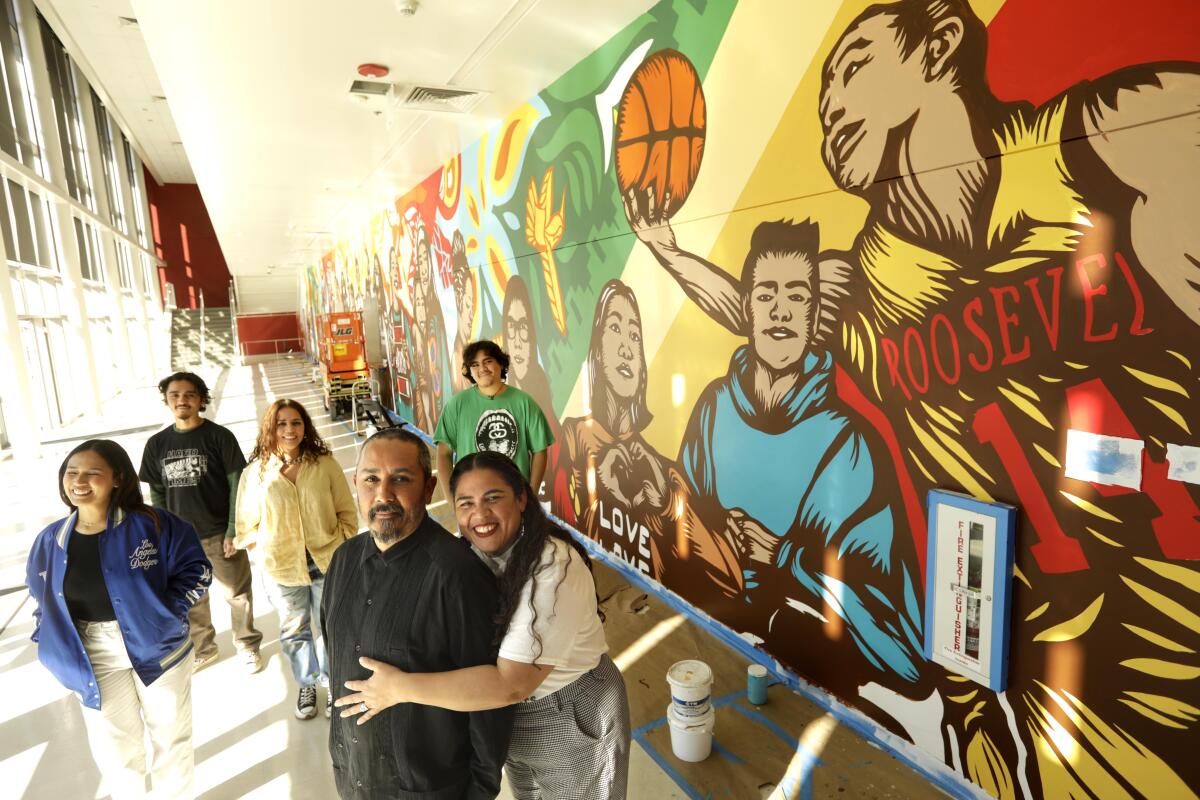
The reviews are starting to pour in for Ed Ruscha‘s retrospective at the Museum of Modern Art. In the New York Times, Jason Farago writes, “For 65 years now, Ed Ruscha has evaded the presumed exhaustion of painting through a linguistic trapdoor: an equation of language and picture, each putting pressure on the other to produce some of the keenest evaluations any artist has ever made of American life.”
New York magazine’s Jerry Saltz, in the meantime, evaluates three works from the show, including Ruscha’s iconic “Los Angeles County Museum on Fire.”
Design time
The sixth annual #TortillaTournament, organized by my colleague Gustavo Arellano, has begun! The competition, naturally, is fierce. For the second year in a row, I contribute an analysis of tortilla package design — which this year includes some interesting turns in color, pattern and content, as well as a medicinal-looking submission from Amazon.
Enjoying this newsletter? Consider subscribing to the Los Angeles Times
Your support helps us deliver the news that matters most. Become a subscriber.
Flea of the Red Hot Chili Peppers is behind a new playground at Nickerson Gardens in Watts designed by NBBJ and ESI Design.
MoMA’s Design Store is having an Eames Office Pop-Up, celebrating the designs of Charles and Ray Eames. This includes a reissue of the Little Toy — basically, prefab architecture for kids.
Essential happenings
National Dance Day is Saturday and my colleague Steven Vargas has the lineup of dance-related events, including a new work by L.A. Dance Project artists in residence and a performance-inspired show by Rashaad Newsome at ArtCenter.
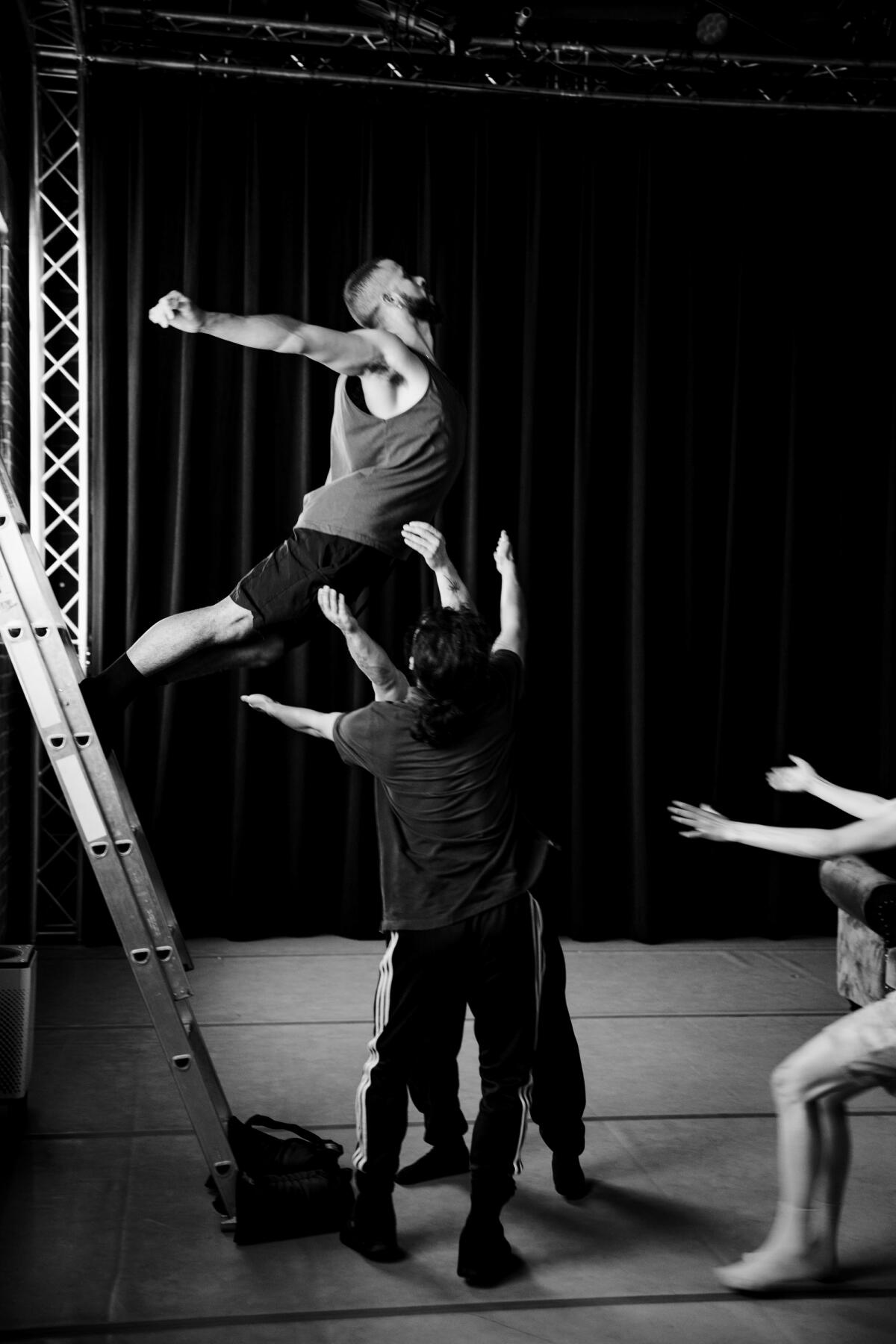
LéaLA, the largest Spanish-language literary festival in the United States, lands at LA Plaza de Cultura y Artes this weekend with a range of presentations and events, including talks, readings and signings from authors from all over the continent.
Moves
The L.A. Phil has announced curators for its 2023/24 Insight festival, including Alice Bag, Gus Van Sant, Cristina Rivera Garza, serpentwithfeet and Frank Gehry. Find a list of upcoming performances, talks and events at this link.
The Westlake bungalow that once belonged to gay rights activist Morris Knight has been added to L.A.’s list of Historic-Cultural Monuments.
The Chicago Architecture Biennial has announced its participant list for the fifth edition of the show, which will include Helmut Jahn’s Thompson Center as a venue. (Good move!)
The Los Angeles Review of Books and N+1 are among this year’s winners of the Whiting Literary Magazine Prizes.
Passages
Fernando Botero, the Colombian painter and sculptor whose depictions of people in exaggerated forms could be full of whimsy but also bite, is dead at 91. In 2012, former Times correspondent Chris Kraul profiled Botero on the occasion of his 80th birthday. At the time, the artist said he wanted to die with “a paintbrush in my hand.”
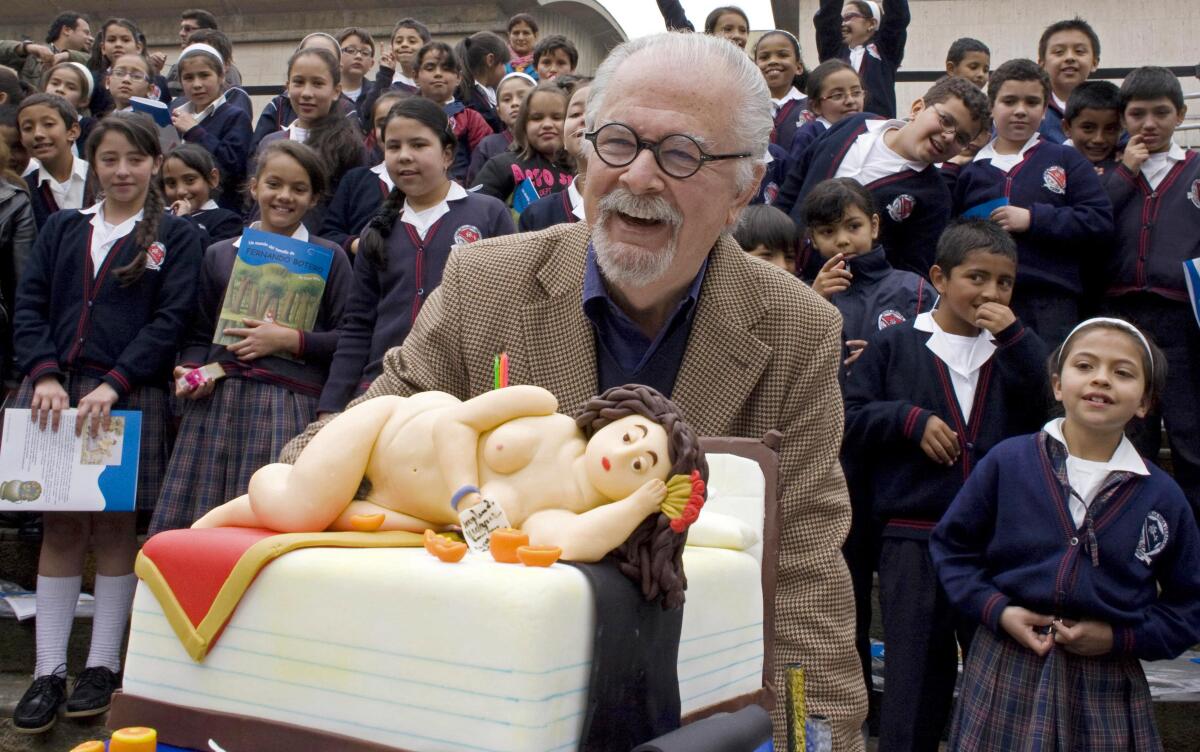
In the news
— Two-thirds of museum workers are thinking of leaving their jobs, if not the field altogether, according to a survey by Museums Moving Forward. Burnout and low pay are among the top reasons.
— Crowded Fire Theater in San Francisco is ditching the hierarchical leadership model for a seven-person shared model.
— Gaby Del Valle on the fictions and elisions of TikTok’s trad wives.
— Christopher Hawthorne on the historical threads that bind architecture, Art Nouveau and the brutal legacies of imperialism in Congo.
— ICYMI, last December, Martin Filler likewise explored the books that track these artistic and architectonic legacies.
— Some of what was lost in the Lahaina fire: a canoe-building tradition.
— The family of collector George Lindemann is returning 33 looted artifacts to Cambodia.
— A new book by environmental journalist Ben Goldfarb looks at the ecological and social price we pay for roads.
— Composer Ryuichi Sakamoto‘s final performance was captured by his son, Neo Sora, and turned into a concert film titled “Opus.”
— My Day in L.A.: The Times’ Deborah Netburn has been lurking in the halls of the ever-evolving Philosophical Research Society in Los Feliz, where she’s checked out the Death Cafe, witch screening, poetry readings and even a magic show.
And last but not least ...
A concerto for violin and noisy plumbing.
The biggest entertainment stories
Get our big stories about Hollywood, film, television, music, arts, culture and more right in your inbox as soon as they publish.
You may occasionally receive promotional content from the Los Angeles Times.




